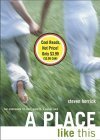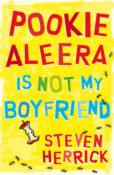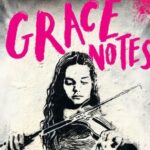A world-first: valuing the NCACL’s Verse Novel Resource for Younger Readers, and Verse Novel Resource for Young Adults.
by Dr Linda Weste
The University of Melbourne
As a researcher of verse novels for children and young adults, I’ve often been asked, “What is it about the verse novel, in particular …?
The answer to the question might reside in the first verse novels for children that you read—in my case, this was three historical verse novels by Karen Hesse—Out of the Dust, a story of rural hardship in 1930s Oklahoma, followed by the even more compelling, Witness, told in eleven voices, about the impact of the Ku Klux Klan on a town in Vermont in 1924, then Aleutian Sparrow, about the forced evacuation of Alaska’s Aleut people from their homelands on the Aleutian Islands to relocation centres in southern Alaska during the Second World War.
historical verse novels by Karen Hesse—Out of the Dust, a story of rural hardship in 1930s Oklahoma, followed by the even more compelling, Witness, told in eleven voices, about the impact of the Ku Klux Klan on a town in Vermont in 1924, then Aleutian Sparrow, about the forced evacuation of Alaska’s Aleut people from their homelands on the Aleutian Islands to relocation centres in southern Alaska during the Second World War.
Three verse novels read in turn; each took less than three hours, and by the end of reading the third, I was convinced of the genre’s condensed, immersive power— whereby each poem seemed to levitate off its spacious page and swirl its figurative language around me, filling my senses with story, characters and settings.
 In response, I began to regularly access archives, libraries, and university collections, to read verse novels from around the world, as well as Australian verse novels for younger readers and young adults. From the outset, I sought global and local, and this was reflected in my reading record: T4: a novel in verse by
In response, I began to regularly access archives, libraries, and university collections, to read verse novels from around the world, as well as Australian verse novels for younger readers and young adults. From the outset, I sought global and local, and this was reflected in my reading record: T4: a novel in verse by Deaf, S/L author Ann Clare LeZotte; A Place like This by Steven Herrick; Inside Out & Back Again by Vietnamese American Thanhhà Lai; Lorraine Marwood’s Ratwhiskers and Me, set in the 1800s on the Victorian Goldfields; Ann E. Burg’s Serafina’s Promise, set in Haiti after a natural disaster; A Dangerous Girl by Catherine Bateson; and Margaret Wild’s Jinx.
Deaf, S/L author Ann Clare LeZotte; A Place like This by Steven Herrick; Inside Out & Back Again by Vietnamese American Thanhhà Lai; Lorraine Marwood’s Ratwhiskers and Me, set in the 1800s on the Victorian Goldfields; Ann E. Burg’s Serafina’s Promise, set in Haiti after a natural disaster; A Dangerous Girl by Catherine Bateson; and Margaret Wild’s Jinx.
A decade and a half on, children’s and young adult verse novels are available world-wide in English language, and in a growing number of translations—a testament to the genre’s growing support base. Verse novels with protagonists from diverse backgrounds—Native American, Asian Pacific Islander/Asian Pacific American, African/African American, Latinx—continue to invigorate the genre, most noticeably in the United States, where diversity statistics are monitored, and where opportunities exist to mentor diverse authors within the Writing- and Publishing- Industries. In my view, we need similarly- tailored initiatives to increase the diversity of verse novels in Australia.
As a result of the genre’s global recognition, verse novels from Australia, the UK, and the United States are now much more likely to share shelves and online repositories, share readers, and share markets.
 The shift in reception is notable within Australian, British, and American libraries. Their addition of search terms “verse novel” and “novel in verse” has been enabling for research in the genre. I undertake catalogue searches of local, state and federal libraries—searches which identify verse novels, but which also assert their global-local reach. Verse novels by Margarita Engle, Elizabeth Acevedo, Aida Salazar, Manjeet Mann, Rajani LaRocca, Reem Faruqi, and Mariko Nagai—are interspersed between those of Kirli Saunders, Sally Morgan, Jeri Kroll, Steven Herrick, Sherryl Clark, Lorraine Harwood, Zana Fraillon, Sally Murphy, Kat Apel, and Pip Harry.
The shift in reception is notable within Australian, British, and American libraries. Their addition of search terms “verse novel” and “novel in verse” has been enabling for research in the genre. I undertake catalogue searches of local, state and federal libraries—searches which identify verse novels, but which also assert their global-local reach. Verse novels by Margarita Engle, Elizabeth Acevedo, Aida Salazar, Manjeet Mann, Rajani LaRocca, Reem Faruqi, and Mariko Nagai—are interspersed between those of Kirli Saunders, Sally Morgan, Jeri Kroll, Steven Herrick, Sherryl Clark, Lorraine Harwood, Zana Fraillon, Sally Murphy, Kat Apel, and Pip Harry.
As a reader and researcher of verse novels, I feel immensely proud that the National Centre for Australian Children’s Literature (NCACL) in Canberra has achieved a world-first with their Verse Novel Resource for Younger Readers, and their Verse Novel Resource for Young Adults. The Resources hold an impressive virtual collection of Australian verse novels and accompanying curriculum and teaching materials.
 The collections are well-maintained—even recently-published verse novels are found in the listings: Sharon Kernot’s 2024 Birdy, and Karen Comer’s Grace Notes—which was listed in the CBCA Notables Children’s Book Council of Australia’s 2024 Book of the Year Awards Older Readers—as well as her Sunshine on Vinegar Street, which was listed in the 2024 Book of the Year Awards Younger Readers.
The collections are well-maintained—even recently-published verse novels are found in the listings: Sharon Kernot’s 2024 Birdy, and Karen Comer’s Grace Notes—which was listed in the CBCA Notables Children’s Book Council of Australia’s 2024 Book of the Year Awards Older Readers—as well as her Sunshine on Vinegar Street, which was listed in the 2024 Book of the Year Awards Younger Readers.
The NCACL also houses physical copies of these verse novels on their shelves. The combined resources are ideal for teachers, librarians, families, home-schooling groups, reading groups, young people, and of course, researchers, to explore and use.
We are fortunate to have these NCACL Resources, and I often wish we had a Resource for adult category verse novels as well. The Australian market for verse novels may be modest compared to that in the United States, but the NCACL has made a timely investment in the genre, and has a “world-first” that will inspire collections elsewhere.
 Linda Weste has a PhD in Creative Writing from the University of Melbourne, and teaches poetry within the Arts Faculty. Linda is the author of three books including two collections of non-fiction interviews with writers of the genre The Verse Novel: Australian & New Zealand and Inside the Verse Novel: Writers on Writing.
Linda Weste has a PhD in Creative Writing from the University of Melbourne, and teaches poetry within the Arts Faculty. Linda is the author of three books including two collections of non-fiction interviews with writers of the genre The Verse Novel: Australian & New Zealand and Inside the Verse Novel: Writers on Writing.
See also:
Australian Verse Novels: Younger Readers
Australian Verse Novels: Young Adult Readers
Bibliography of Australian Verse Novels
Australian Verse Novels Resource Reviews
Australian Verse Novels Quiz
The Quiz is a fun activity to test your knowledge of Australian Verse Novels.
Posted by: NCACL | Published: 27 Jun 2024

0 Comments
There are currently no comments, be the first to leave one